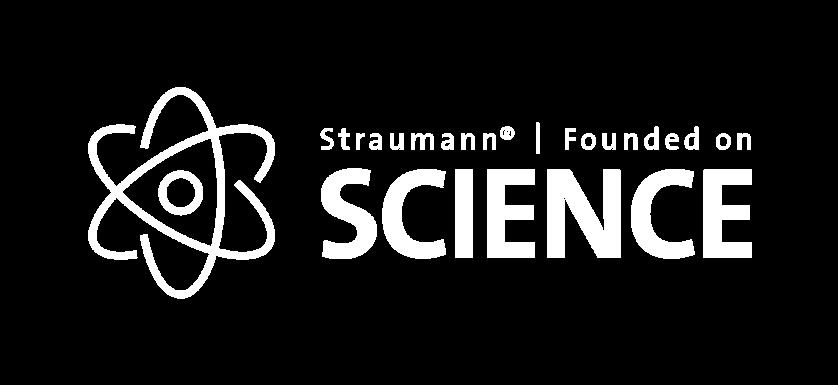SCIENTIFIC HIGHLIGHTS


Short overviews on recently published scientific evidence.
Issue 5/2025
Edited by Dr. Marcin Maj






Short overviews on recently published scientific evidence.
Issue 5/2025
Edited by Dr. Marcin Maj



Marginal Bone Level Changes in Full-Arch Rehabilitation: Digital Versus Analog Protocols-A 5-Year Retrospective Study
(N De Angelis et al., 2025) and
Enamel matrix derivative in the prevention and treatment of medicationrelated osteonecrosis of the jaws in rats
(C Eren et al. 2025)
Effect of time and local factors on the stability of hydrophilic self-tapping tissue-level implants: 1-year prospective study.
(P Carosi et al., 2025)
Clin Implant Dent Relat Res. 2025 Aug;27(4):e70080
Nicola De Angelis, Paolo Pesce, Vito Carlo Alberto Caponio, Giulia Santamaria, Oriana Spanu, Maria Menini

The purpose of this study was to compare the clinical outcomes of analog impressions versus intraoral scanning in full-arch immediate loading rehabilitations. Specifically, it evaluates peri-implant marginal bone level (MBL) changes at different time intervals (implant placement, loading, and at 2 and 5 years), as well as rates of mechanical and prosthetic complications. The study included 62 patients who underwent full-arch rehabilitation with immediate implant placement between 2019 and 2020. Patients were divided into two groups: analog impression and digital intraoral scanning. All patients were rehabilitated with fixed titanium-PMMA screw retained restorations. Bone level was assessed through standardized intraoral radiographs at key time points. Additional parameters recorded included procedural time, prosthetic complications, and implant failures. Statistical analyses involved repeated measures ANOVA and post hoc Bonferroni tests.
• The follow-up period was 5 years. Implant survival was 99.6%.
• No significant differences were found in prosthetic complications.
• MBL was slightly higher in the analog group at baseline (mean = 0.21, SD = 0.04 vs. digital mean = 0.17, SD = 0.04, t-test p-value < 0.001) than in the digital group.
• Despite this, the overall bone loss remained within clinically acceptable limits during the follow-up period.
• Digital impressions significantly reduced procedural time compared to analog methods.
Both impression techniques provided satisfactory clinical outcomes. Digital impressions demonstrated efficiency advantages but were associated with slightly greater bone loss over time. Analog impressions remain a reliable standard for full-arch immediate loading rehabilitations, though digital methods show promise for improved patient experience. Further randomized, long-term studies are needed.
Adapted from N De Angelis et al., Clin Implant Dent Relat Res. 2025 Aug;27(4):e70080, for more info about this publication, click HERE
J Funct Biomater. 2025 Aug 28;16(9):312
Naoki Kitamura, Kikue Yamaguchi, Kaiya Himi, Kota Ishii, Motohiro Munakata

The purpose of this study was to objectively evaluate volumetric and dimensional changes of the alveolar ridge, including both hard and soft tissues, following simultaneous horizontal bone augmentation and implant placement using intraoral digital scanning. Intraoral digital scans were obtained at baseline (T0) and at 2 (T1), 6 (T2), and 12 weeks (T3) post-surgery. Scans were superimposed using dedicated imaging software to measure volumetric and cross-sectional changes.
• Volumetric gain was significant at T1 but decreased significantly from T1 to T2 (p = 0.0006) and from T1 to T3 (p = 0.0002).
• Cross-sectional analysis showed significant increases in ridge width at T1 at all measured levels, accompanied by a significant vertical decrease at the alveolar crest from T1 to T2 (p = 0.0056) and T3 (p = 0.0106).
These findings indicate that horizontal augmentation provides initial volumetric gain but is followed by substantial reduction at the crest, suggesting that rigid fixation may enhance stability; however, controlled clinical trials are required.
Adapted from N Kitamura et al., J Funct Biomater. 2025 Aug 28;16(9):312., for more info about this publication, click HERE
Int J Oral Maxillofac Surg. 2025 Sep 19:S0901-5027(25)01439-0
C Eren, C Y Asan, A Kara, C Topan, A E Demirbas
The purpose of this study was to evaluate the effectiveness of enamel matrix derivative (EMD) in preventing and treating medication-related osteonecrosis of the jaws (MRONJ). The study included 60 rats divided into five equal-sized groups. The preventive effect of EMD was evaluated in groups 1 (healthy control), 2 (bisphosphonate control), and 3 (bisphosphonate + EMD), and treatment efficacy was examined in groups 4 (osteonecrosis control) and 5 (osteonecrosis + EMD). Intraperitoneal zoledronic acid was administered to induce MRONJ, and the left mandibular molar teeth were extracted in all groups. Saline-impregnated absorbable collagen sponges (ACS) were placed in the extraction sockets of the control groups, and EMD-impregnated ACS were placed in the study groups. After 8 weeks of healing, histomorphometry, immunohistochemistry, and micro-CT analyses were performed.
• The rate of complete mucosal closure in the extraction socket was significantly higher in the EMD groups compared to the controls (P = 0.015 , P = 0.009).
• VEGF, OPG, and RANKL expression levels were higher in the EMD groups compared to their respective controls; however, this was only significant for group 3 vs group 2 (all P < 0.01).
• Micro-CT examinations demonstrated significantly improved values in the EMD groups compared to the controls.
EMD administration may enhance soft and hard tissue healing in MRONJ cases, promoting angiogenesis and bone apposition and increasing levels of VEGF and OPG. EMD may be a potential agent for the prevention and treatment of osteonecrosis.
Adapted from C Eren et al., Int J Oral Maxillofac Surg. 2025 Sep 19:S0901-5027(25)01439-0, for more info about this publication, click HERE
Int J Oral Implantol (Berl). 2025 Sep 8;18(3):225-240
Effect of time and local factors on the stability of hydrophilic self-tapping tissuelevel implants: 1-year prospective study.
Carosi P, Lorenzi C, Di Gianfilippo R, Campanella V, Wang HL, Arcuri C
The purpose of this study was to evaluate changes in implant stability quotient values of hydrophilic tissue-level implants over time, and to investigate the influence of local factors on variations in these values.METHODS: Fifty tapered, self-tapping, tissuelevel implants with a hydrophilic surface were placed and monitored for 12 months. Implant stability quotient values were recorded at the time of insertion (T0) and monthly thereafter for 12 months. All implants were restored with screw-retained restorations 2 months after placement. A repeated measures analysis of variance was used to evaluate the trends in implant stability quotient values over time. A multiple linear regression model was employed to determine the impact of various factors on changes in implant stability quotient values.
• Implant stability quotient values decreased from T0 to T1, although this reduction was not statistically significant (P = 0.28).
• The greatest decrease was observed in implants with initially high implant stability quotient values at T0 (P 0.05). Values increased significantly at each subsequent time point (P 0.001).
• A significant time effect was noted between immediate and delayed placement protocols (P 0.05), with immediate implants demonstrating lower initial implant stability quotient values but a steeper increase over time.
• Implants placed in the mandible and wider implants in molar sites showed higher implant stability quotient values compared to those placed in the maxilla and narrower implants (mandible vs maxilla P 0.05; wide molar vs regular premolar P 0.05).
• Insertion torque was positively correlated with implant stability quotient values at T0 (P 0.001).
The lowest implant stability quotient value was recorded 1 month after implant placement, and then increased consistently throughout the study period without reaching a plateau. Implants placed immediately showed a steeper improvement in implant stability quotient values.
Adapted from P Carosi et al., Int J Oral Implantol (Berl). 2025 Sep 8;18(3):225-240, for more info about this publication, click HERE
J Prosthodont. 2025 Aug 22.
Ahlam A Alhazmi, Mazin Talal Alharbi, Anas Lahiq, Lama Saleh AlMarshoud, Ihab Tawfiq Mitwalli, Rayan Asali, Amr Ahmed Azhari, Walaa Magdy Ahmed

The aim of this study was to describe a complete digital workflow for maxillary and mandibular implant-supported full-arch prostheses in an edentulous patient with nonuniform bone shape, limited interarch space, and excessive gingival display. A fullarch immediate loading protocol, including a fixation base, a scalloped bone-reduction guide for preserving the interdental bone, an osteotomy guide, and provisional prostheses, was digitally designed and fabricated. The reverse scan technique using laboratory analog was used for fabricating definitive zirconia prostheses. The technique integrates digital technology with clinical practice to improve the accuracy of full-arch implant restorations. It is a notable development in dental implantology that integrates digital technology with clinical practice to improve the precision of full-arch implant restorations. This approach results in reliable and effective implant-supported restorations.
Adapted from AA Alhazmi et al., J Prosthodont. 2025 Aug 22, for more info about this publication, click HERE
BMC Oral Health. 2025 Aug 9;25(1):1306
Batur Orak, Mehmet Akgül, Tuncer Akdoğan, Onur Evren Kahraman

The purpose of this study was to investigate the biomechanical impact of different drilling techniques on the primary stability of dental implants placed in D3-D4 type bone conditions. An in vitro experimental study was conducted using bovine costal bone specimens resembling D3-D4 bone quality. A total of 21 Straumann BLT implants (4.1 mm × 10 mm) were placed using three drilling protocols: undersized drilling (n = 7), standard drilling (n = 7), and countersinking (n = 7). Primary stability was assessed via insertion torque (IT), removal torque (RT), and resonance frequency analysis (RFA) using the Ostell Beacon device. Statistical analysis was performed using the Kruskal-Wallis test followed by Dunn-Bonferroni post hoc tests. Significance was set at p < 0.05.
• The undersized and standard drilling groups showed significantly higher median insertion torque (20.0 Ncm and 18.0 Ncm, respectively) compared to the countersinking group (8.0 Ncm) (p < 0.05).
• Similarly, removal torque values were significantly greater in the undersized and standard drilling groups (27.0 Ncm each) than in the countersinking group (9.0 Ncm) (p < 0.05).
• Median ISQ values were highest in the undersized drilling group (77.0), followed by the standard drilling(75.0) and countersinking (69.0) groups.
• The difference between the undersized drilling and countersinking groups was statistically significant (p < 0.05).
In low-density bone models simulating D3-D4 bone, the use of a countersinking drill resulted in significantly reduced primary stability compared to standard and undersized drilling techniques. Undersized drilling proved more effective in enhancing implant stability when using tapered implants under low-density bone conditions.
Adapted from B Orak et al., BMC Oral Health. 2025 Aug 9;25(1):1306, for more info about this publication, click HERE
Clin Implant Dent Relat Res. 2025 Aug;27(4):e70075
Alberto Monje, Sofía Navarro-Mesa, Costanza Soldini, Giorgio Zappalá, Pedro Peña, Jose Manuel Navarro Sr, Ramón Pons

The purpose of this study was to compare the clinical/radiographic outcomes and the rate of disease resolution of the adjunctive use of electrolysis (GS) or hydrogen peroxide (HP) for mechanical decontamination in the reconstructive treatment of periimplantitis-related intrabony defects. A multicenter randomized clinical trial was designed to compare the effectiveness and safety of two strategies for the surface decontamination of crater-like and circumferential intrabony defects subjected to reconstructive therapy. Clinical evaluation was made at baseline (T0), 6 months (T1) and 12 months (T2), while radiographic assessment was carried out at T0 and T2. Disease resolution was the primary outcome. Supportive therapy was administered following surgical treatment. Simple and multiple generalized estimating equations (GEE) models were applied to compare the outcomes achieved and to explore potential confounders. Post hoc power calculation was performed to validate the statistical power of the findings.
• Overall, 58 patients completed the study.
• All the clinical parameters/indices, namely probing pocket depth, modified sulcular bleeding index, suppuration grading index, and width of keratinized mucosa, showed a significant reduction (p < 0.001) from T0 to T2 in both tested groups.
• Mucosal recession increased (p < 0.001) from T0 to T2. Marginal bone level and radiographic defect angle increased (p < 0.001) from T0 to T2.
• The disease resolution rate was 87.5% for the GS group and 64.5% for the HP group at T2 (p = 0.08).
• No major postoperative complications were reported.
Both tested surface decontamination methods are effective in resolving peri-implantitis, in gaining radiographic marginal bone levels, and in enhancing clinical peri-implant conditions in the surgical reconstructive therapy
Adapted from A Monje et al., Clin Implant Dent Relat Res. 2025 Aug;27(4):e70075, for more info about this publication, click HERE
Cureus. 2025 Aug 18;17(8):e90380.
James JR, Kharat A, Chinnakutti S, Kamble S, Mandal M, Das A

The purpose of this review was to This narrative review examines recent advancements in dental implantology, emphasizing innovative materials, digital technologies, and patient-centered approaches that improve treatment outcomes. Implant systems have progressed from traditional titanium to biocompatible alternatives such as zirconia, titanium-zirconium alloys, and scaffold-based designs, enabling enhanced integration and durability. The review draws on literature published between 2015 and 2025, identified through structured searches of biomedical databases including PubMed, Scopus, and Google Scholar. Developments in artificial intelligence, robotics, and 3D printing have enhanced surgical precision and planning accuracy; however, their clinical adoption remains limited by high costs, steep learning curves, and inconsistent long-term data. While bioactive surfaces, regenerative biomolecules, and minimally invasive techniques contribute to better healing outcomes, their accessibility and regulatory approval vary widely across regions. Smart implants with sensor technologies show promise for real-time monitoring but lack robust clinical validation and standardization. Ethical concerns surrounding artificial intelligence (AI) integration, patient data privacy, and equitable access further complicate implementation. Incorporating sustainable practices and personalized treatment strategies may enhance the predictability and success of implant procedures, but these must be weighed against economic and logistical constraints. These considerations underscore the need for critical evaluation as implant dentistry undergoes a paradigm shift in modern oral rehabilitation.
Adapted from JR James et al., Cureus. 2025 Aug 18;17(8):e90380, for more info about this publication, click HERE
N De Angelis et al., Clin Implant Dent Relat Res. 2025 Aug;27(4):e70080 | N Kitamura et al., J Funct Biomater. 2025 Aug 28;16(9):312 | C Eren et al., Int J Oral Maxillofac Surg. 2025 Sep 19:S0901-5027(25)01439-0 | P Carosi et al., Int J Oral Implantol (Berl). 2025 Sep 8;18(3):225-240 | AA Alhazmi et al., J Prosthodont. 2025 Aug 22 | B Orak et al., BMC Oral Health. 2025 Aug 9;25(1):1306 | A Monje et al., Clin Implant Dent Relat Res. 2025 Aug;27(4):e70075 | JR James et al., Cureus. 2025 Aug 18;17(8):e90380 | source: www.pubmed.gov | Dr. Marcin Maj holds the position of Head of Global Scientific Affairs at Institute Straumann in Basel, Switzerland
